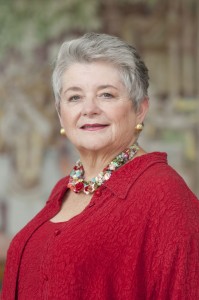
Dec 5, 2012 | Innovation
 Appearing as a speaker at Maui Economic Development Board’s Innovation Series, University of Hawai‘i President M.R.C. Greenwood rallied local leaders to support investment in the HI2 Innovation Initiative. The initiative, according to Greenwood, will act as an economic fuel cell, generating new discoveries, creating thousands of jobs and putting more money into Hawaii’s economy, she said. Greenwood said the university’s research work already attracts $500 million to the state’s economy. And, she said, that means “jobs, lots of jobs, lots of well-paying jobs.”
Appearing as a speaker at Maui Economic Development Board’s Innovation Series, University of Hawai‘i President M.R.C. Greenwood rallied local leaders to support investment in the HI2 Innovation Initiative. The initiative, according to Greenwood, will act as an economic fuel cell, generating new discoveries, creating thousands of jobs and putting more money into Hawaii’s economy, she said. Greenwood said the university’s research work already attracts $500 million to the state’s economy. And, she said, that means “jobs, lots of jobs, lots of well-paying jobs.”
However, Greenwood said research and development only makes up about 3 percent of Hawai‘i’s economy, which is dominated by spending in government, tourism, real estate and the military. To illustrate Hawai‘i’s potential for growth, she pointed to San Diego, which in the 1960s, “looked very much the way we do today,” with an economy based on the same sectors. But since then, San Diego, which is made up of seven counties, has pursued research and development aggressively, so today, makes up 14 percent of its economy. “They have clearly gotten their act together,” she said. If Hawai‘i were to pursue the same course, particularly if government were to join businesses and the community in supporting the university’s research and development work, then Hawai‘i could draw $750 million to $1 billion in research and development funding as well as start-up and spin-off companies, she said. “It needs to be a creature of the community,” she said, referring to HI2.
For Maui, the university is proceeding with development of the ATST solar telescope atop Haleakalā, which Greenwood said, would bring millions of dollars into the island’s economy as well as “generate a lot of new technology and a lot of new ideas.” The University of Hawai‘i is poised to be the first university in the country to have satellite launch capacity, she said. Greenwood pointed to development of clean energy, new agriculture and cancer research as areas of opportunity for the university.
MEDB’s Innovation Series is expected to host in 2013 Dr. Hank Wuh, surgeon and inventor; Karin Frost, a Maui resident and inventor of the Ergo Baby Carrier, which produces baby products; and video game designer and environmental philanthropist Henk Rogers.
Nov 21, 2012 | Community

Kristin Holmes, owner of Swan Interiors
Teamwork, fairness and the motivation to serve its clients are all factors in the success of Swan Interiors, which has been in business for more than nearly 30 years, according to owner Kristin Holmes. “The driving force of our success is to have clients appreciate a beautiful environment and how one feels in a space that elevates individuals,” Holmes said. “Turn key projects require an immense amount of time and management that goes well beyond what clients can see or imagine. Above all, it is dedication to client satisfaction that prevails.”
Holmes opened her small business in 1985 and after serving private clients for 25 years, she expanded by opening a furnishings store in Wailuku in 2010. The business employs one full-time designer, two store designers and a bookkeeper. “We work as a team and everyone knows that they are part of this extended circle,” Holmes said. “We are the first stone thrown in the pond and as the outward ripples keep going, the circle gets bigger and all our skills are needed to get the job done for the client in a professional and efficient manner.” Holmes also said that fairness plays a key part in her business’ success, particularly when it comes to its product pricing structure and the way people in and outside of the firm are treated. “I honor and appreciate every effort that is made by those that help our business to thrive.”
In keeping up with addressing Swan Interiors’ clients needs, Holmes and her staff have participated in several social media classes and workshops sponsored by Maui Economic Development Board. Staffers are constantly looking for ways to bring technology into their daily tasks while also using the networking opportunities to maximize the business’s exposure. Holmes herself participates and supports the Maui Smart Grid Project in her home and design studio. The program is designed to demonstrate and evaluate new technologies that will help residents better manage and reduce energy consumption during periods of high demand. It also assists Maui Electric Co. operate its electricity grid more efficiently.
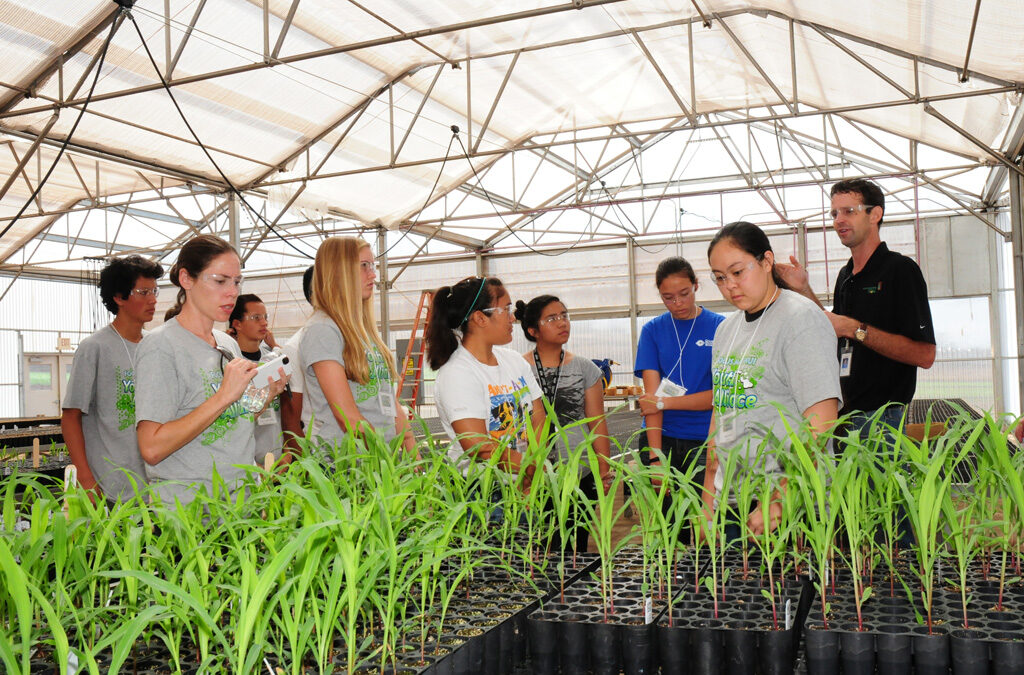
Nov 14, 2012 | Environment, Sustainability
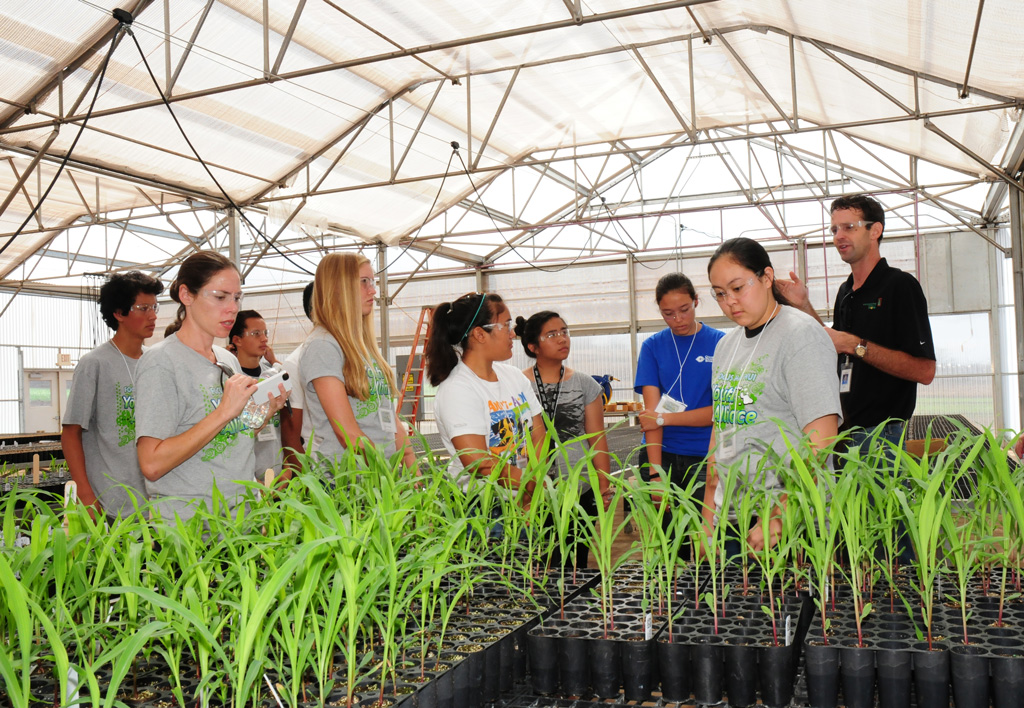 Members of the Focus Maui Nui Youth Alliance visited Monsanto Co.’s Maui operations recently, getting a close-up look at the company’s high-tech operations to grow seed corn to make a dent in world hunger. Both Racieli Andrada, 16, a junior at Maui High School, and Kaile Stockham, 15, a sophomore at Lahainaluna High School, had heard the negative publicity about Monsanto, such as its work with genetically engineered food. While Andrada came away from the experience impressed, Stockham remained skeptical, but said she was open-minded.
Members of the Focus Maui Nui Youth Alliance visited Monsanto Co.’s Maui operations recently, getting a close-up look at the company’s high-tech operations to grow seed corn to make a dent in world hunger. Both Racieli Andrada, 16, a junior at Maui High School, and Kaile Stockham, 15, a sophomore at Lahainaluna High School, had heard the negative publicity about Monsanto, such as its work with genetically engineered food. While Andrada came away from the experience impressed, Stockham remained skeptical, but said she was open-minded.
“I learned that Monsanto uses a lot of advanced technology to help keep track of the seeds and to help them grow to their full potential,” Andrada said. She said Monsanto changes the genes within corn seeds “to allow the crop to grow to its full potential without being harmed or disturbed by the environment,” such as pests. Stockham said she “really enjoyed going in the greenhouse, where we got to watch things in action.” “I was baffled by the fact that they are able to electronically track every seed that ever enters their state-of-the-art facilities,” she said. Stockham also said she was intrigued to learn that Monsanto’s technicians shave off a piece of each seed to send to a lab on the Mainland “where they run it through a DNA machine that determines whether or not the seed has the qualities they are looking for.”
Youth Alliance members attend monthly events during the school year to explore and gain a greater understanding of key components in the Maui community. Their gatherings are coordinated by the Maui Economic Development Board, which is celebrating its 30th anniversary in 2012. Stockham said she believes that all citizens have a “duty to be well-informed” on all current topics and the tour at Monsanto was an experience toward fulfilling her duty. “I believe the only way for us to make the best decisions for Maui’s future is if everyone on Maui is actively informed and participating in local decisions.”
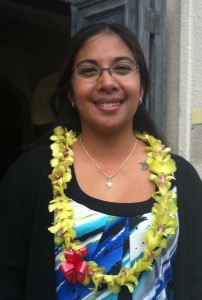
Nov 7, 2012 | Education

Chelsea Fernandez, veteran and owner of the Maui-based assistive technology company, FernanTECH.
The “Women of Power Stand Down” event is being held for women who have served in the U.S. military. “Stand Down” is a military term to describe a safe position off of the combat zone where weary soldiers can retreat to rest, re-boot and re-energize. Likewise, Women of Power Maui Stand Down will ignite positive change for women service members through the stories and lessons learned of other women.
The event is free for all women veterans living on Maui, Moloka‘i or Lana‘i. Special travel scholarships are available for women veterans who live on Moloka‘i or Lana‘i. The cost to non-military is $25. It’s the first time a Women of Power Stand Down event has been held in Maui County and the half day event kicks off a weekend of activities to celebrate Veterans Day. Focus is on sharing key strategies to help women vets find rewarding jobs or to get promoted. A special interactive session on networking skills will be followed by a Tech Talk Story panel and the opportunity to meet others with similar experiences and interests.
Event partners are theStrategist, a leader in healthcare design and innovation, Women in Technology, a project of MEDB, FernanTECH, a veteran-owned, Maui-based assistive technology company, and the Maui Business & Professional Women’s organization. Feedback from women veterans who attended the Women of Power Stand Down in Honolulu in July 2012 described the event as very informative, motivating and inspirational for women vets. One participant commented, “I was totally enamored by all the guest speakers and their trials and tribulations to be successful in their chosen vocations. They inspire me to keep striving for my goals and never give up.”
What: “Women of Power Stand Down” event
When: Friday November 9th, 9 a.m. to 1 p.m.
Where: MEDB’s Malcolm Training Center, 1305 N. Holopono Street
in the Research & Tech Park, Kihei
Cost: Free to all female veterans, with travel scholarships for Molokai and Lanai
RSVP: womenofpowermaui2012.eventbrite.com or call 808.875.2341
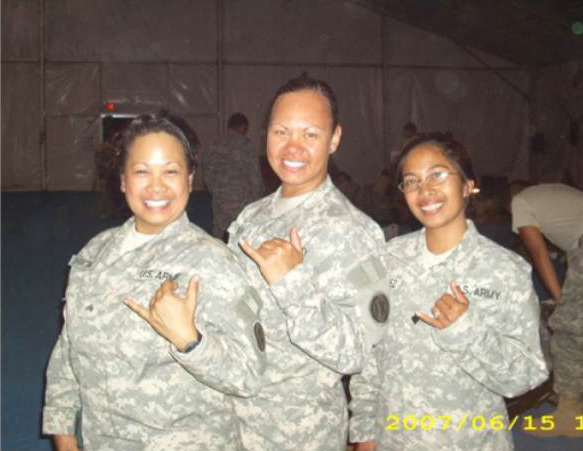
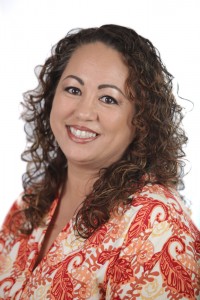
Oct 31, 2012 | Community
 On November 6, General Election day, Stacey Moniz will show up at a Maui polling place, just as she has been for the last two decades. Not to vote, but to serve as a volunteer precinct official. “For me it’s the one civic thing I can do besides voting,” she said. As executive director for Women Helping Women, Moniz avoids all conflicts of interest by declining to endorse or campaign for candidates. What she does encourage is voting and volunteering at precincts in need of help with those who come to cast ballots. “Voting is a very, very serious thing and volunteering at a polling place can be enjoyable,” Moniz said.
On November 6, General Election day, Stacey Moniz will show up at a Maui polling place, just as she has been for the last two decades. Not to vote, but to serve as a volunteer precinct official. “For me it’s the one civic thing I can do besides voting,” she said. As executive director for Women Helping Women, Moniz avoids all conflicts of interest by declining to endorse or campaign for candidates. What she does encourage is voting and volunteering at precincts in need of help with those who come to cast ballots. “Voting is a very, very serious thing and volunteering at a polling place can be enjoyable,” Moniz said.
A volunteer since 1990, Moniz has helped at polling places in Kihei, Paia and Wailuku. “I’m a volunteer at heart,” she said. Training for precinct officials is provided. Moniz said she’s particularly impressed with the state and county officials’ progress over the years in eliminating as many barriers as possible for voters to cast ballots. For example, precinct officials can provide pen holders and magnifying glasses for voters who need the assistance. If a person is physically unable to get out of a car at a polling place, precinct officials can bring the poll book and ballot to the person. “My goal is to help the voters go through the process as easily as possible,” Moniz said.
Qualifications for a precinct official include:
- Be 16 years of age on or before June 30, 2012
- Be able to read and write English
- Be able to lift 25 to 35 pounds; and
- Be able to attend a training session.
A precinct official’s day starts at 5:30 a.m. and ends between 7 and 7:30 p.m. A stipend of $85 for the day is provided to all precinct officials. For more information, call the Maui County Clerk’s Office at 270-7749 or visit: hawaii.gov/elections/volunteers.
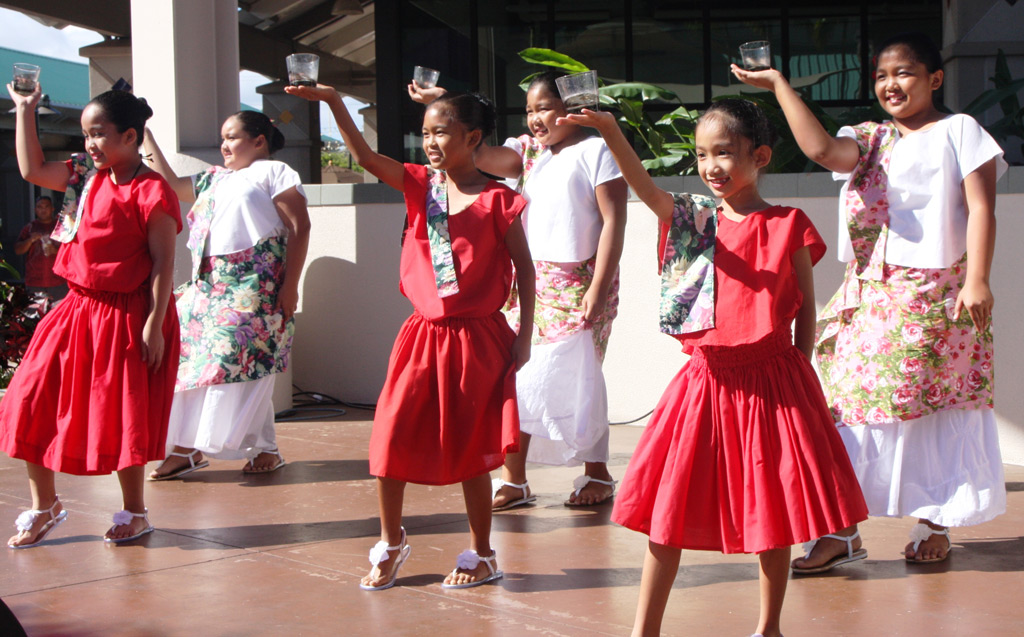
Oct 24, 2012 | Community
 Madelyne Pascua founded Dance International Production with the intention of perpetuating the Filipino culture on Maui. She continues to do that today, sixteen years after forming her dance troupe. The group’s repertoire also includes Hawaiian and Tahitian dances. Pascua earned a choreographer and director certificate from the Kalihi Palama Arts & Culture Academy on Oahu. She said her passion for dance dates back to the age of nine when she first arrived in Hawaii, learning Tahitian, hula and eventually Filipino folk dance.
Madelyne Pascua founded Dance International Production with the intention of perpetuating the Filipino culture on Maui. She continues to do that today, sixteen years after forming her dance troupe. The group’s repertoire also includes Hawaiian and Tahitian dances. Pascua earned a choreographer and director certificate from the Kalihi Palama Arts & Culture Academy on Oahu. She said her passion for dance dates back to the age of nine when she first arrived in Hawaii, learning Tahitian, hula and eventually Filipino folk dance.
She said she prefers an all-female dance troupe, but you need not be Filipino to be a part of Dance International Production. “I always tell my dancers, dance with your heart,” she said. Today, the group has 35 members ages 5 to 22. They perform once a month at the Maui Mall and two to three times a month at Whalers Village Shopping Center. In addition to private parties, Dance International Production has provided free performances at community venues including the Barrio Fiesta, Miss Maui Filipina Pageant, the American Cancer Society’s Relay for Life fundraiser and the Maui Fil-Am Heritage Festival. Dancers in 2006 traveled to the Philippines to perform in five different towns, and earlier this year they shared Filipino dances at a Barrio Fiesta held at the St. Martin University campus in Washington state.
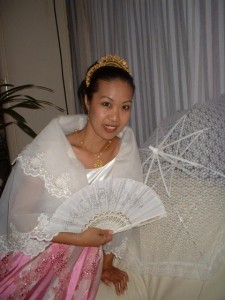 To be a part of Dance International Production, performers are exposed to dances from several cultures. “This enables the individual to learn and respect different cultures,” Pascua said. In addition, Pascua encourages her dancers to attend college and has awarded $7,000 in scholarships during the last four years to nine of her dancers. Pascua said she hopes to have continuous income from performances so that more college scholarships can be provided. Dance International Production is also aiming to have a studio with a library so that both members and non-members can learn more about world cultures.
To be a part of Dance International Production, performers are exposed to dances from several cultures. “This enables the individual to learn and respect different cultures,” Pascua said. In addition, Pascua encourages her dancers to attend college and has awarded $7,000 in scholarships during the last four years to nine of her dancers. Pascua said she hopes to have continuous income from performances so that more college scholarships can be provided. Dance International Production is also aiming to have a studio with a library so that both members and non-members can learn more about world cultures.

Oct 17, 2012 | Community
 Four of the nine seats on the Board of Trustees for the state Office of Hawaiian Affairs will go before voters during the Nov. 6 general election. A fifth seat, representing Moloka‘i and Lana‘i, is uncontested, so the incumbent, OHA Chairwoman Collette Machado, has no opponent on the ballot. All registered voters can vote for candidates in this year’s contested OHA races; they are the residency seats for Maui, Kaua‘i-Ni‘ihau, Hawai‘i Island, and one at-large seat. The trustees serving on the O‘ahu seat and three other at-large seats are not up for re-election this year.
Four of the nine seats on the Board of Trustees for the state Office of Hawaiian Affairs will go before voters during the Nov. 6 general election. A fifth seat, representing Moloka‘i and Lana‘i, is uncontested, so the incumbent, OHA Chairwoman Collette Machado, has no opponent on the ballot. All registered voters can vote for candidates in this year’s contested OHA races; they are the residency seats for Maui, Kaua‘i-Ni‘ihau, Hawai‘i Island, and one at-large seat. The trustees serving on the O‘ahu seat and three other at-large seats are not up for re-election this year.
Eight candidates are seeking the Maui residency seat on the OHA Board of Trustees. In November 2011, when former Maui trustee and retired 2nd Circuit Judge Boyd Mossman resigned from his OHA seat to take an unpaid position as leader of the Mormon Church in Kona, Gov. Neil Abercrombie appointed Carmen “Hulu” Lindsey in January 2012 to serve out the remainder of Mossman’s term. The eight candidates running for the Maui OHA seat in November are: Johanna Ku‘ulei Shin Amorin of Kihei, Glenn G. Au of Wailuku, Rose Duey of Wailuku, Doreen Pua Gomes of Kula, Dain Kane of Wailuku, Ke‘eaumoku Kapu of Lahaina, Carmen “Hulu” Lindsey of Makawao, and Kaulana Mossman of Kula. There are 11 candidates vying for the Kaua‘i-Ni‘ihau seat, three for the Hawai‘i island seat and six for the open at-large seat. For more information, visit http://www.oha.org/ka-wai-ola/decision-2012
The Office of Hawaiian Affairs functions as both a government agency with a strong degree of autonomy, and as a trust. OHA’s own website states that its “purpose is to provide the opportunity for a better life and future for all Hawaiians.” OHA’s mission statement: “To mālama (protect) Hawai‘i’s people and environmental resources and OHA’s assets, toward ensuring the perpetuation of the culture, the enhancement of lifestyle and the protection of entitlements of Native Hawaiians, while enabling the building of a strong and healthy Hawaiian people and nation, recognized nationally and internationally.”
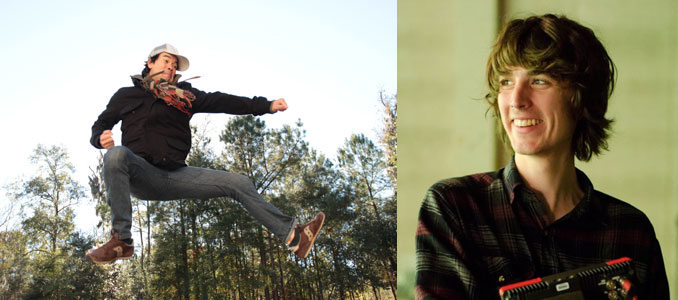
Oct 10, 2012 | Education

Filmmakers Destin Cretton (left) and Shan Liljestrand (right)
Two filmmakers with Maui ties will have their work showcased this month at the 2012 Hawai‘i International Film Festival on Oahu. The event, featuring more than 150 films from 40 different countries, is set for Oct. 11-21 at Regal Dole Cannery Stadium 18 Theatres & IMAX and the Hawai‘i Theatre. The festival bills itself as a premier international film event with two mandates: “to be a festival of record for emerging films from Asia and the Pacfiic, and to present the top festival films from around the world.” For more information, go to www.hiff.org.
Entries of interest include features by 33-year-old filmmaker and teacher Destin Cretton and 22-year-old cinematographer Shan Liljestrand. Both men grew up on Maui, were educated in schools here and now make Los Angeles their home. They also share a passion for filmmaking. “I love working in an art form that requires so much collaboration with other people,” said Cretton, whose festival film title is “I Am Not a Hipster.” It’s about a young singer-songwriter in San Diego who is learning to deal with the loss of his mother. There are five live music performances in the film, which all interact with the story and elaborate the characters. Liljestrand’s first entry at the Hawaii Film Festival is called “‘Ape,” the name of a plant used by Native Hawaiians as a test to determine if someone was real or a spirit. The subject in the film is Daniel, a young man who suffers from mental illness and travels to Hana in a form of self-therapy, but once there, reality fades further away. “Making this film was a great education as I am constantly learning to make movies,” Liljestrand said.
Asked to give advice to young people interested in filmmaking, Cretton said, “Just find a story that is close to you and figure out a way to tell it. Maui locals are natural masters of the craft so if that’s what you’re interested in, just go for it.” Liljestrand added, “It all boils down to telling a story, so write, draw, take photographs, whatever you can do to tell a story.”
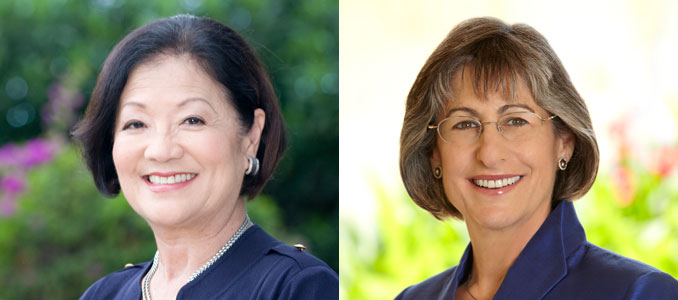
Oct 3, 2012 | Education
 Voters have an opportunity on Nov. 6 to elect a woman to replace retiring Hawaii U.S. Sen. Daniel Akaka. The race for the U.S. Senate seat features Democratic Congresswoman Mazie Hirono and former Republican Gov. Linda Lingle. Hirono is giving up her seat as the Hawai‘i 2nd Congressional District representative in the U.S. House of Representatives while Lingle is seeking to get back into political office two years after completing two terms as governor of Hawai‘i. The candidates have jointly agreed to participate in four statewide televised debates in October. These particular forums provide a chance for viewers to see the candidates together on one stage discussing their stance on the islands’ most critical issues and what they would do to address them if elected.
Voters have an opportunity on Nov. 6 to elect a woman to replace retiring Hawaii U.S. Sen. Daniel Akaka. The race for the U.S. Senate seat features Democratic Congresswoman Mazie Hirono and former Republican Gov. Linda Lingle. Hirono is giving up her seat as the Hawai‘i 2nd Congressional District representative in the U.S. House of Representatives while Lingle is seeking to get back into political office two years after completing two terms as governor of Hawai‘i. The candidates have jointly agreed to participate in four statewide televised debates in October. These particular forums provide a chance for viewers to see the candidates together on one stage discussing their stance on the islands’ most critical issues and what they would do to address them if elected.
The four Hirono-Lingle debates are scheduled for:
- October 8, 7 p.m., on KHON, sponsored by AARP.
- October 16, 8 p.m. on KITV, sponsored by Civil Beat.
- October 18, 8 p.m., on PBS Hawaii.
- October 22, 8 p.m., on Hawaii News Now, sponsored by the Honolulu Star-Advertiser.
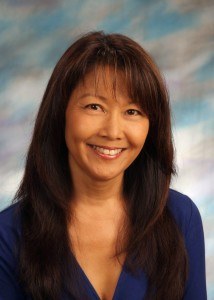
Sep 26, 2012 | Events
 The Maui Fair promises onolicious food and lots of fun, as well as engaging activities like robotics for youth and a new Events Arena. For the Fair’s Managing Director Sherri Grimes, the Robo Tech Maui Expo & Competition has brought much pride. The event for high schoolers has increased from just a few teams on Maui to more than 40 from across the state. “Robotics is really near and dear to my heart. Actually everything to do with education and STEM (Science Technology Engineering and Math) is important to me,” she said. Grimes said she hopes the crowd will support the Fair by coming to see the Robo Tech competition. The events are organized by Maui high school students to increase interest in science, technology, engineering and math. There will also be a Lego competition for 4th and 5th graders.
The Maui Fair promises onolicious food and lots of fun, as well as engaging activities like robotics for youth and a new Events Arena. For the Fair’s Managing Director Sherri Grimes, the Robo Tech Maui Expo & Competition has brought much pride. The event for high schoolers has increased from just a few teams on Maui to more than 40 from across the state. “Robotics is really near and dear to my heart. Actually everything to do with education and STEM (Science Technology Engineering and Math) is important to me,” she said. Grimes said she hopes the crowd will support the Fair by coming to see the Robo Tech competition. The events are organized by Maui high school students to increase interest in science, technology, engineering and math. There will also be a Lego competition for 4th and 5th graders.
The Fair, now in its 90th year, opens with the traditional parade on Thursday, and continues throughout the weekend with other draws including rides, food, entertainment, horticulture, livestock, photo, art and commercial exhibits. Grimes is expecting the crowds to exceed 95,000 during the four days. This year’s family-oriented fair is built on the theme of “A Timeless Tradition.” One of the newest features is an Events Arena which provides information and how-to demonstrations on a variety of topics from taiko drumming to hula zumba to caring for orchids and pets. “It’s educational. It’s engaging and it’s interactive,” Grimes said. “We’re very much looking forward to it.”
Maui Economic Development Board’s Focus Maui Nui program will return to the Fair where it distributes a survey for residents. This year’s booth will be in the Horticulture section of the gymnasium. The surveys are an opportunity “take the pulse of the community” on core Focus Maui Nui strategies and values: education, environment, infrastructure, sustainable business and cultural values. Free hand-sanitizers will be provided. For more information about Maui Fair 2012, go to www.mauifair.com.

 Appearing as a speaker at Maui Economic Development Board’s Innovation Series, University of Hawai‘i President M.R.C. Greenwood rallied local leaders to support investment in the HI2 Innovation Initiative. The initiative, according to Greenwood, will act as an economic fuel cell, generating new discoveries, creating thousands of jobs and putting more money into Hawaii’s economy, she said. Greenwood said the university’s research work already attracts $500 million to the state’s economy. And, she said, that means “jobs, lots of jobs, lots of well-paying jobs.”
Appearing as a speaker at Maui Economic Development Board’s Innovation Series, University of Hawai‘i President M.R.C. Greenwood rallied local leaders to support investment in the HI2 Innovation Initiative. The initiative, according to Greenwood, will act as an economic fuel cell, generating new discoveries, creating thousands of jobs and putting more money into Hawaii’s economy, she said. Greenwood said the university’s research work already attracts $500 million to the state’s economy. And, she said, that means “jobs, lots of jobs, lots of well-paying jobs.”

 Members of the
Members of the 



 To be a part of Dance International Production, performers are exposed to dances from several cultures. “This enables the individual to learn and respect different cultures,” Pascua said. In addition, Pascua encourages her dancers to attend college and has awarded $7,000 in scholarships during the last four years to nine of her dancers. Pascua said she hopes to have continuous income from performances so that more college scholarships can be provided. Dance International Production is also aiming to have a studio with a library so that both members and non-members can learn more about world cultures.
To be a part of Dance International Production, performers are exposed to dances from several cultures. “This enables the individual to learn and respect different cultures,” Pascua said. In addition, Pascua encourages her dancers to attend college and has awarded $7,000 in scholarships during the last four years to nine of her dancers. Pascua said she hopes to have continuous income from performances so that more college scholarships can be provided. Dance International Production is also aiming to have a studio with a library so that both members and non-members can learn more about world cultures.


 Voters have an opportunity on Nov. 6 to elect a woman to replace retiring Hawaii U.S. Sen. Daniel Akaka. The race for the U.S. Senate seat features Democratic Congresswoman Mazie Hirono and former Republican Gov. Linda Lingle. Hirono is giving up her seat as the Hawai‘i 2nd Congressional District representative in the U.S. House of Representatives while Lingle is seeking to get back into political office two years after completing two terms as governor of Hawai‘i. The candidates have jointly agreed to participate in four statewide televised debates in October. These particular forums provide a chance for viewers to see the candidates together on one stage discussing their stance on the islands’ most critical issues and what they would do to address them if elected.
Voters have an opportunity on Nov. 6 to elect a woman to replace retiring Hawaii U.S. Sen. Daniel Akaka. The race for the U.S. Senate seat features Democratic Congresswoman Mazie Hirono and former Republican Gov. Linda Lingle. Hirono is giving up her seat as the Hawai‘i 2nd Congressional District representative in the U.S. House of Representatives while Lingle is seeking to get back into political office two years after completing two terms as governor of Hawai‘i. The candidates have jointly agreed to participate in four statewide televised debates in October. These particular forums provide a chance for viewers to see the candidates together on one stage discussing their stance on the islands’ most critical issues and what they would do to address them if elected.
